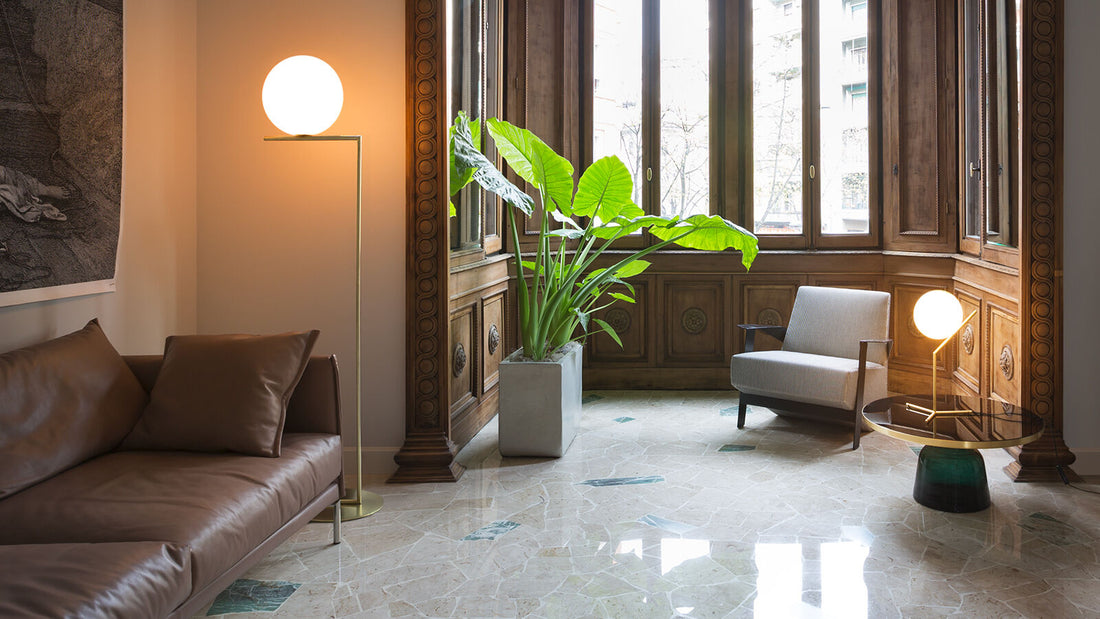
Beyond Brightness – The Art and Science of Architectural Lighting Design
Share
Introduction – Lighting as Part of Architecture
In architecture, light is both a functional necessity and a creative medium. A well-designed lighting scheme complements a building’s form, enhances its materials, and tells its story. More than ever, architects and lighting designers work hand-in-hand to ensure that lighting is considered from the earliest design stages—not as an afterthought.
Architectural lighting design transforms structures into experiences, balancing visibility with atmosphere. It reveals details in daylight, enlivens them at night, and ensures spaces feel safe, navigable, and inviting.
Astro, Kos II Exterior LED Ceiling Light
Core Principles of Architectural Lighting
Form and Shadow: Light defines shape, and shadow gives it depth. Using light directionally reveals contours and textures in materials like stone, brick, and metal.
Light Direction and Quality: Grazing emphasizes surface texture, while washing creates even illumination. Designers choose the right technique to match the architectural intent.
Contrast and Balance: High contrast adds drama; low contrast creates calm. Achieving the right balance depends on the purpose of the space.
Natural vs. Artificial Light: Daylight integration reduces energy consumption and connects interiors with the outdoors. Artificial light should complement, not compete with, natural sources.
Exterior Lighting – Making an Impression
The exterior is a building’s handshake with the world, and lighting determines whether it feels approachable, grand, or dramatic.
Facade Techniques:
- Washing: Evenly illuminating large surfaces for a clean, uniform look.
- Grazing: Casting light at a sharp angle to highlight textures.
- Spotlighting: Drawing focus to specific architectural elements.
Safety and Wayfinding: Lighting ensures safe navigation of paths, stairs, and entry points while creating a sense of welcome.
Event and Seasonal Lighting: Dynamic systems allow buildings to change appearance for holidays, cultural events, or branding purposes.
Flos, Clessidra 20°+20° Indoor/Outdoor Wall Light
Interior Architectural Lighting
Inside, lighting serves both the human experience and the architectural narrative.
Integration with Structure: Concealed coves, recessed channels, and built-in fittings keep the focus on architecture, not hardware.
Layering: Ambient lighting provides base illumination; task lighting supports function; accent lighting adds visual interest.
Enhancing Materials: Directional light can make wood glow warmly, stone appear more textured, and glass shimmer.
Sustainability and Technology
Modern architectural lighting is as much about efficiency as aesthetics.
- LED Technology: Offers long lifespan, low energy use, and design flexibility.
- Lighting Control Systems: Enable dimming, scheduling, and daylight harvesting to optimize energy use.
- Sustainable Materials: Fixtures made from recyclable or low-impact materials align with green building goals.
Flos, Skygarden 1 Small Pendant
Trends and Innovations
Dynamic Color Systems: Allow facades and interiors to change hue and intensity for mood or branding.
Interactive Installations: Lighting that responds to movement or environmental cues creates memorable experiences.
Human-Centric Lighting: Adapts color temperature and intensity to support circadian rhythms, even in architectural applications.
Common Pitfalls and How to Avoid Them
- Overlighting: Leads to glare, wasted energy, and loss of atmosphere.
- Ignoring Context: Lighting should respond to surrounding architecture and environment.
- Poor Integration: Visible wiring or awkward fixture placement detracts from design integrity.
Conclusion
Architectural lighting design is a marriage of art and science—balancing beauty, functionality, sustainability, and innovation. Whether it’s the glow of a historic facade or the subtle wash of light along a modern staircase, lighting is an integral part of the architectural experience.



